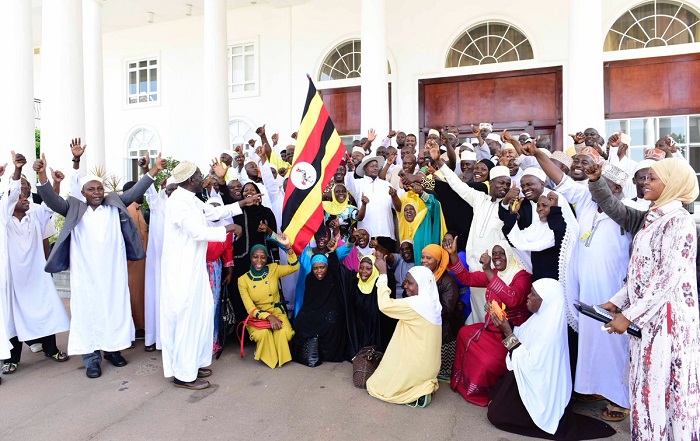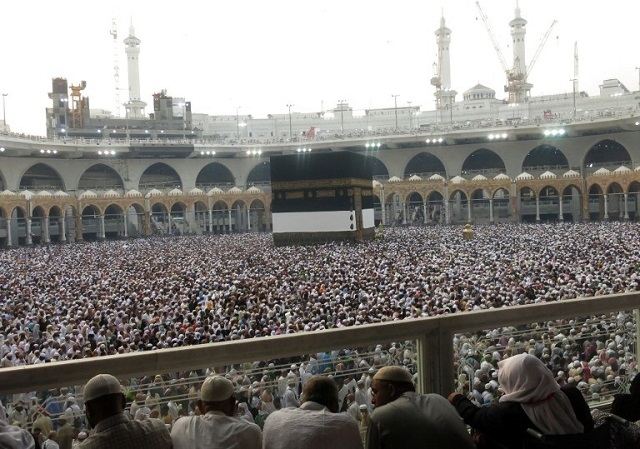
Mecca, Saudi Arabia | AFP |
Muslims from across the world have gathered in Mecca in Saudi Arabia for the annual hajj pilgrimage, which is a pillar of Islam, to take part in the following rituals:
- Ihram: Pilgrims wear special outfits, which for men is a two-piece white seamless garment. Women wear loose dress, generally white, with only the face and hands exposed. During this period, pilgrims must abstain from sex and quarrels, not use perfumes, and not cut their hair or nails.
- “I am answering your call, God,” pilgrims chant during the hajj.
- Once in Mecca, pilgrims perform Tawaf, or circumambulation, seven times counter-clockwise, around the Kaaba, a black masonry cube in the centre of the Haram, or sacred site — a word used to describe the Grand Mosque.
Muslims pray in the direction of the Kaaba from wherever they are in the world. They believe the Kaaba was first built by Adam.
As they circle, pilgrims point their palms at the eastern cornerstone known as the “Black Stone” and say: “Allahu akbar” (God is greatest).
- Walk back and forth between two stone spots, a distance of just under 400 metres (yards) at the Grand Mosque. This is known as “Sa’i” and is carried out seven times, emulating a search for water by Ibrahim’s wife Hagar.
These rituals are considered the Umra, or lesser pilgrimage, which come ahead of the hajj’s main rites.
- The key rites start on the 8th of the Islamic month of Dhul Hijja and end on the 13th (this year September 10-15).
Pilgrims head to Mina, around five kilometres (three miles) east of the Grand Mosque, on the first day of hajj known as Tarwiah (watering) day because pilgrims traditionally watered their animals and stocked water for their trip to Mount Arafat, 10 kilometres southeast of Mina.
- Arafat Day, on the 9th of Dhul Hijja, (September 11) is the climax of the hajj season. Pilgrims gather on the hill known as Jabal al-Rahma (Mount of Mercy) and the surrounding Mount Arafat plain, where they remain until evening for prayer and to read the Koran. Prophet Mohammed is believed to have delivered his final hajj sermon there almost 1,400 years ago.
- Stoning the ‘devil’ –
- After sunset on the 9th of Dhul Hijja, pilgrims leave for Muzdalifah, half-way between Arafat and Mina, where they stay at least until midnight. They gather pebbles to perform the symbolic “stoning of the devil”.
- After dawn prayers on the 10th day, which starts the Eid al-Adha feast, pilgrims return to Mina. The first of three daily stoning rites, known as Jamarat al-Aqaba, begins after sunrise. Traditionally, seven pebbles are thrown at a post representing the devil, emulating the actions of Abraham.

Since 2004, it has been replaced by walls to accommodate the rising numbers of pilgrims and to try to avoid a repeat of deadly crushes at the site.
- After the first stoning, sheep are slaughtered and the meat distributed to needy Muslims, symbolising Abraham’s willingness to sacrifice his son Ishmael on the order of God, who provided a lamb in the boy’s place at the last moment.
Pilgrims no longer carry out this rite themselves. They instead pay agencies to distribute the meat to the world’s needy.
- Men then shave their heads or trim their hair while women cut a fingertip-length of their locks. After that they can end their Ihram and change back to normal clothing.
- They then return to the Grand Mosque in Mecca, circumambulating seven times around the Kaaba, and again performing Sa’i.
- The pilgrims then return to Mina to continue the stoning ritual for two or three more days.
- Finally, they return to the Grand Mosque, circumambulating the Kaaba seven times.
 The Independent Uganda: You get the Truth we Pay the Price
The Independent Uganda: You get the Truth we Pay the Price



